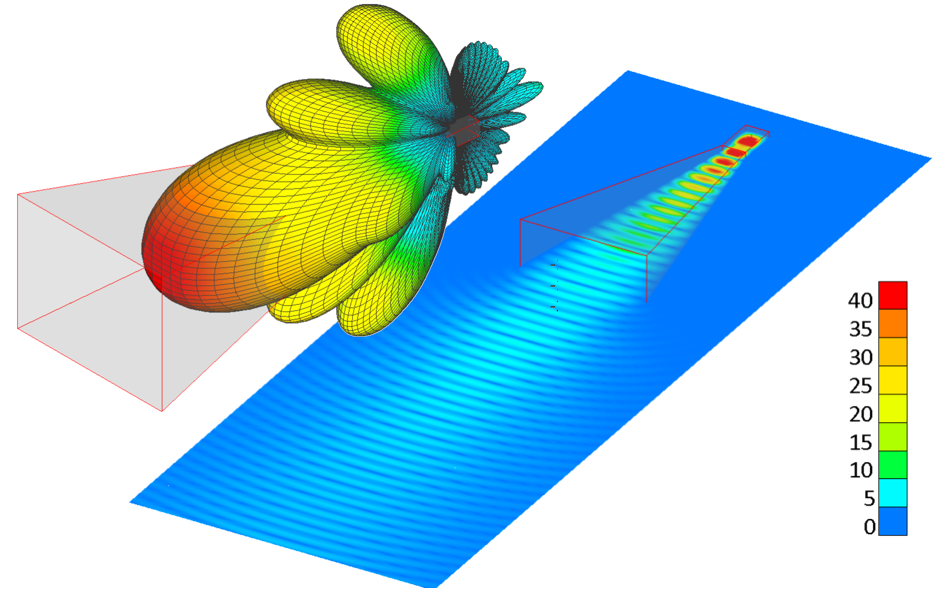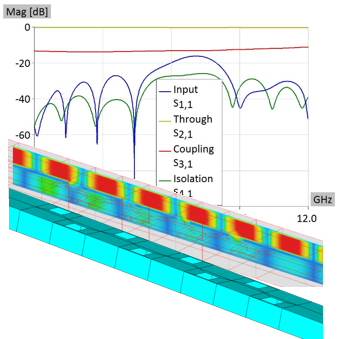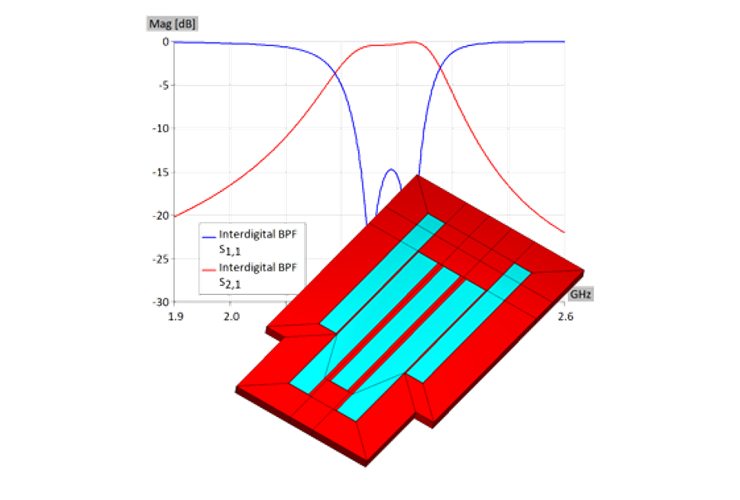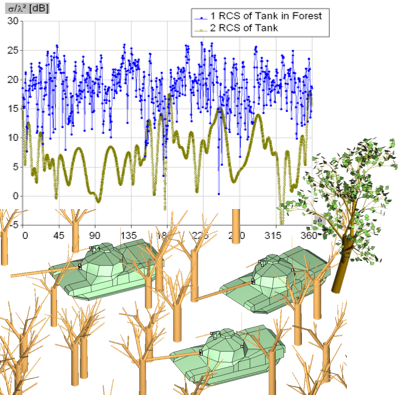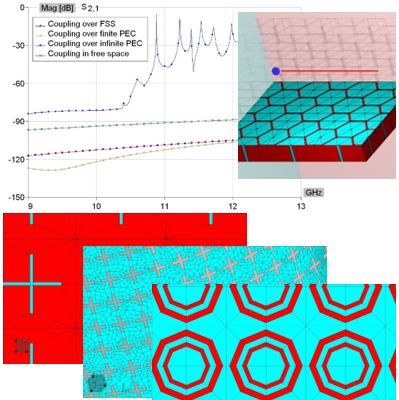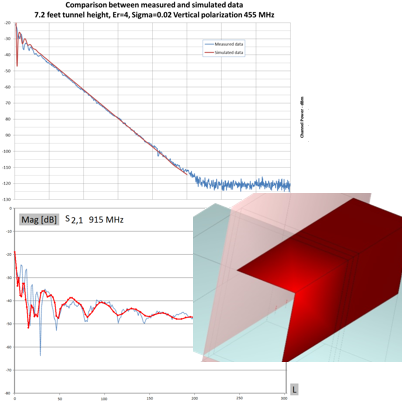The application note presents WIPL‑D Pro models and simulation results of one of the simplest and widely used antennas – rectangular horn antenna at 10 GHz. Half and quarter of the model were simulated in order to demonstrate the capabilities…

Rectangular Horn Antenna
Multi-Hole Waveguide Coupler
Multi-hole waveguide coupler is extension of single-hole coupler, designed to increase the operational bandwidth. The performance is based on size of the coupling holes and distance between them, since it is important to achieve wave amplification in the through-direction and cancellation in the opposite…
Microstrip Band Pass Filters
This application note presents S-parameters obtained with effective usage of WIPL-D Fitter, number of unknowns, computer memory required and simulation time per frequency obtained after simulation of two passive, microstrip, band pass filters. The first simulated filter is interdigital, while the second one is…
Trees, Foliage and Complex Sceneries
Scattering of EM waves from trees and foliage as well as the propagation of EM waves in the presence of forests plays an important role in many civil and military applications (such as Foliage Penetrating Radar for detecting potential targets in the…
Frequency Selective Surface
There is a growing demand for new materials to enhance device performances at low cost. For several years, many periodicals there have been published (built from large number of uniform cells) which show that such engineering issues can be resolved. Numerous cases demonstrate…
RF Propagation in Mining Tunnels
Due to inherent higher order basis functions, efficient parallelization on multi core CPUs and support for simulations on GPU platforms, WIPL-D software can be effectively used for radio frequency propagation problems. One such problem would be determining power transfer between transmitter and receiver antennas…

